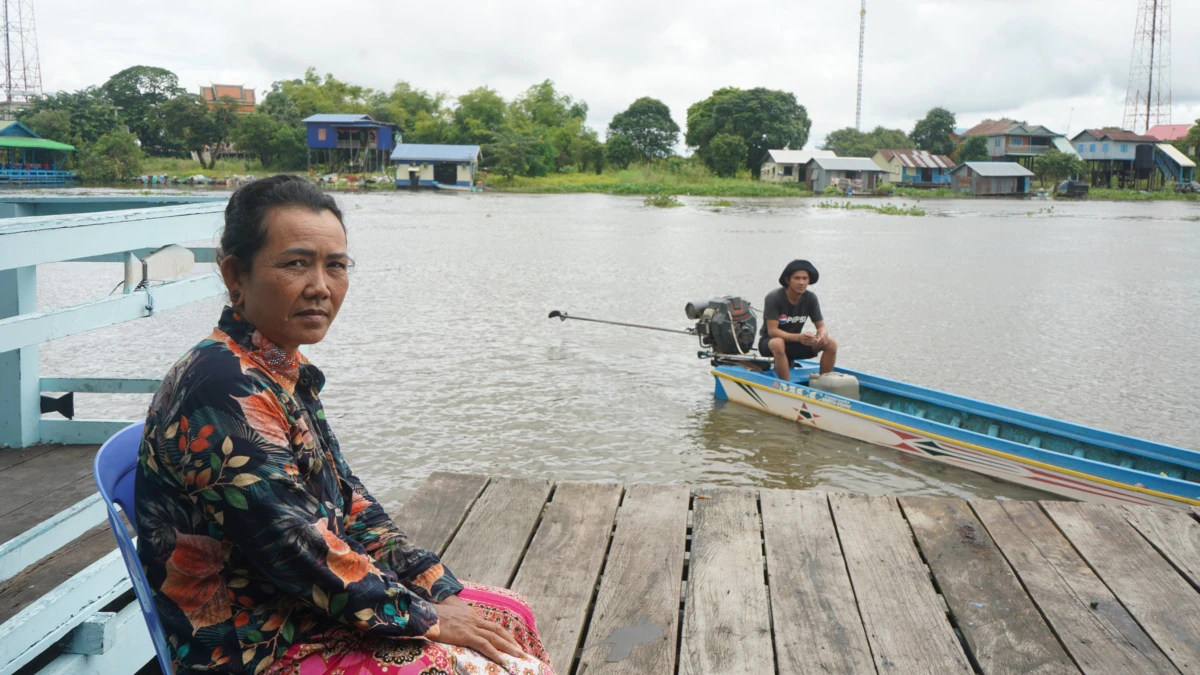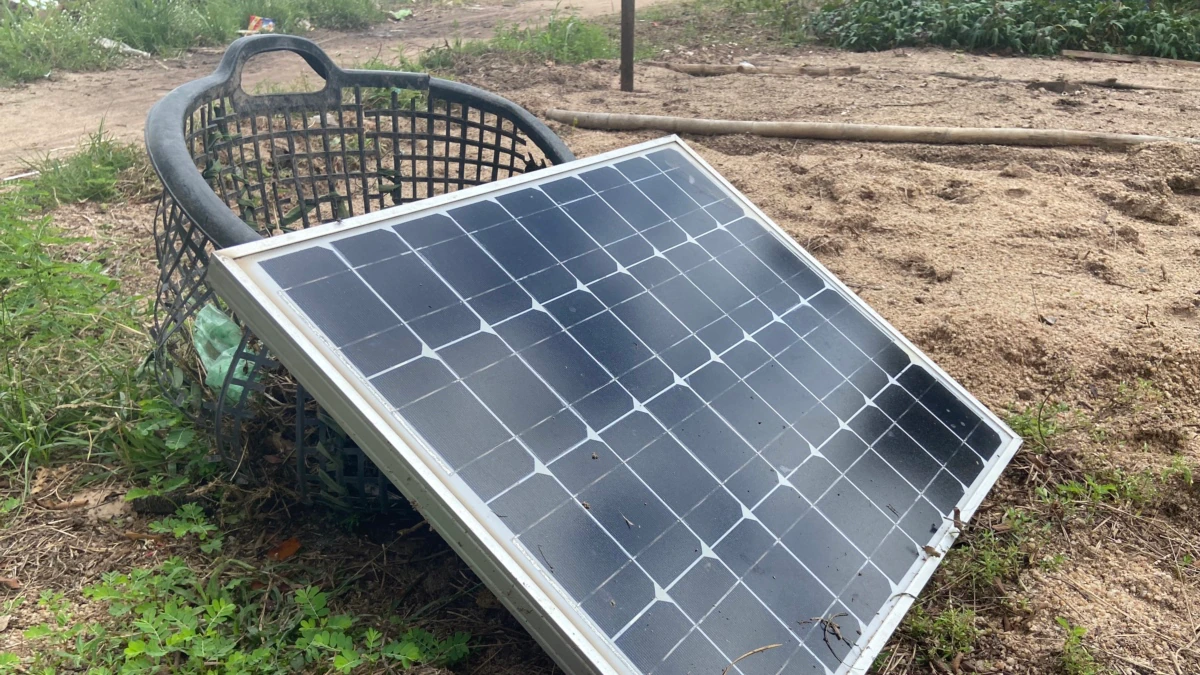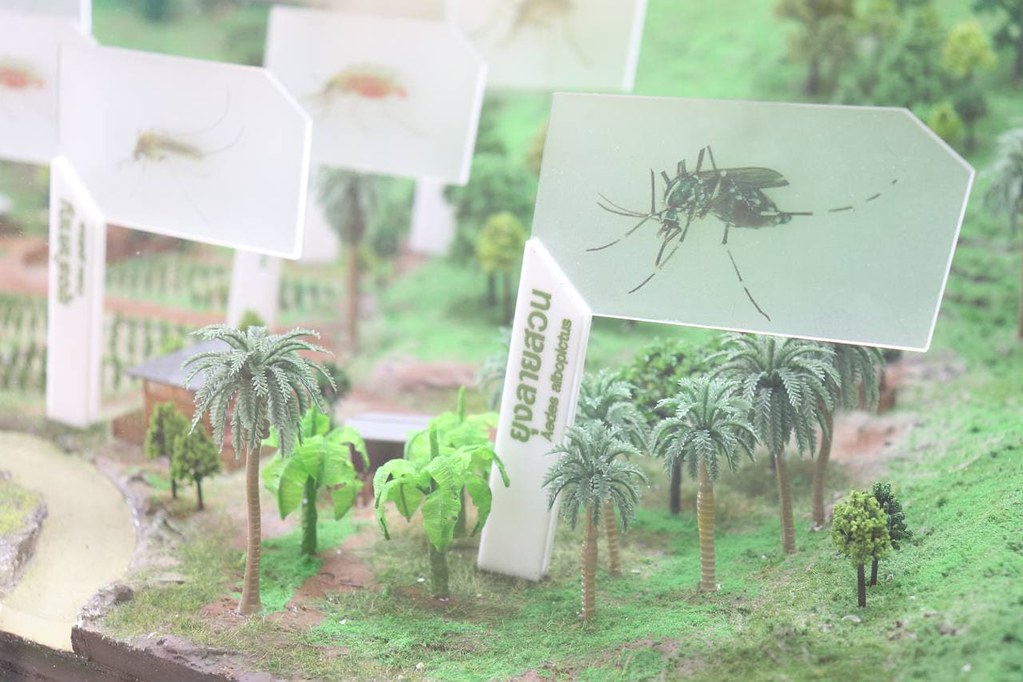BATTAMBANG, CAMBODIA — When Puth Thavy was 20, the fisherman and his siblings used to come back to their village each day with three boatloads full of fish, or about 200 kilograms. Today they can barely fill a single boat.
“Our fishing is so bad, I think it has decreased more than half,” said Thavy, now 38, as he and his sister sold the day’s catch to a middleman on a floating house at the edge of the Tonle Sap floodplain. “We are getting older, while the fish are getting fewer.”
Two of Thavy’s eight siblings have stopped fishing, and left their hometown. The family is from Bak Prea floating village in Battambang province, well-known from a Cambodian 1960s classical song, “Fisherman’s Daughter.” These days, many of the village’s daughters have left for better jobs.
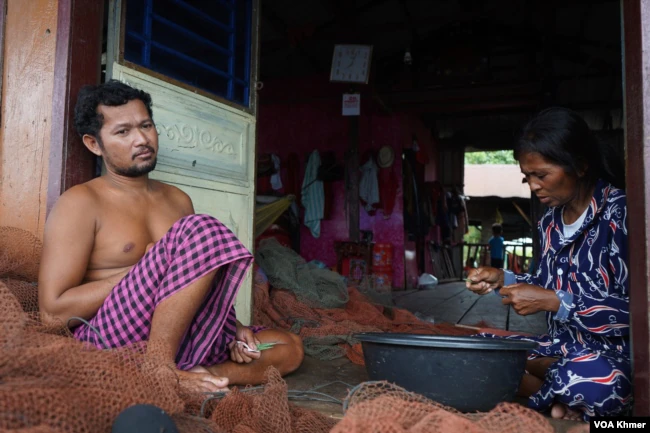
Thavy’s experience mirrors what other fisher families on the Tonle Sap lake told VOA Khmer and what countless fishers have been saying for years. Their daily catch has been on a steady decline, forcing many to migrate for seasonal work or leave the industry altogether. An analysis of available data confirms that fewer people are fishing across Cambodia. But other indicators reveal a trend that is difficult for many to believe: the number of fish caught in Cambodia has reportedly doubled over the last 20 years.
How could total fish yields double while local fishing families are in a downward spiral? VOA analyzed data sets from the UN Food and Agriculture Organization, the National Institute of Statistics and Fish Administration, and interviewed fishery experts, government officials and local fisher families to find out what’s really happening and why.
While some experts were skeptical of the figures, one researcher said both trends could be possible due to intensive fishing practices.
“The catch could be increasing, yet the fish stock, or the quantity of fish at a certain time in the system, could decline,” said Jean Christopher-Diepart, a researcher on agrarian changes in the Mekong region, whose study on Fishery Reform in Cambodia was published in 2016. “They can increase fish catch, but not in a sustainable way. The fish they catch are basically gone from the system; they cannot reproduce.”
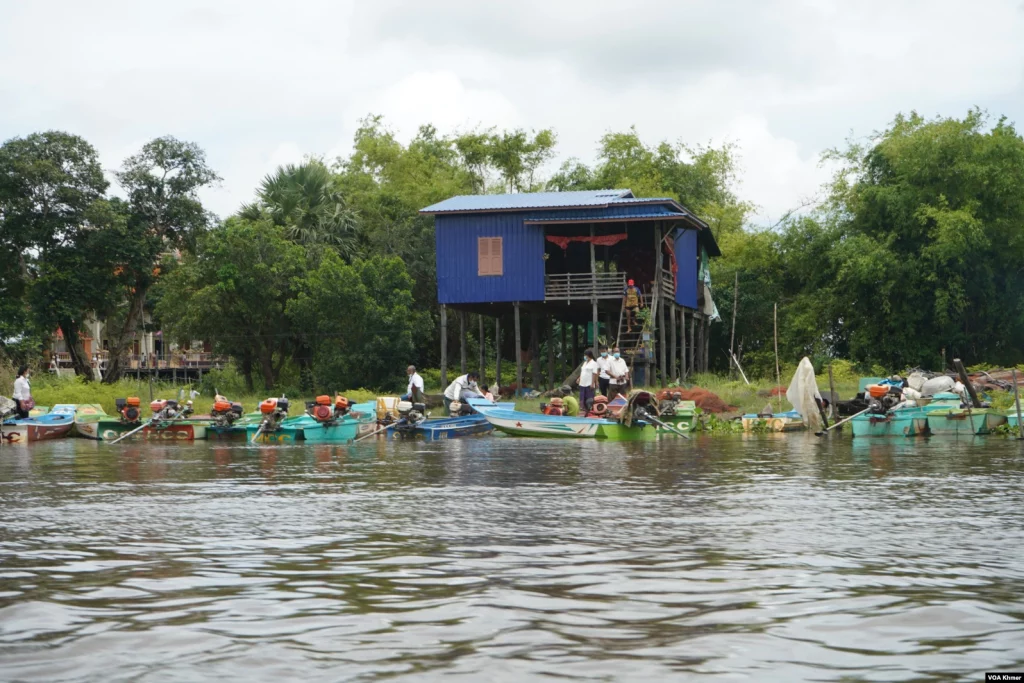
Fishery in Cambodia: Golden Era, Last Refuge
Cambodia has long been considered one of the world’s most productive and diverse fisheries thanks to its unique ecosystem: the annual flood waters that surge down the Mekong River and force the Tonle Sap river to reverse direction, flooding thousands of hectares and providing ideal habitat and food for fish. In a typical rainy season, high water levels also inundate areas all the way to Vietnam. In the dry season, as the waters recede, abundant fish stocks are forced back into the main bodies of water such as the Mekong River and Tonle Sap Lake, and that’s when fish are harvested.
This naturally built ecosystem has historically given fortune to fishermen families like Thavy’s. Cambodians are among the heaviest consumers of freshwater fish – each Cambodian eats about 40 kilograms of fish in a year, representing 70% of Cambodia’s intake of animal protein.
The official numbers indicate it should still be a golden era for fisher families.
The country’s inland fishery yield has doubled over the last 20 years, from about 250,000 tons to more than half a million tons annually, according to data from the UN Food and Agriculture Organization (FAO), which uses yearly totals collected by district and provincial fish administrations.
Cambodian officials said the overall trends show the freshwater fishery in Cambodia is doing well, thanks to good management and fishers who obey laws and regulations. Fish catches increased mainly before 2018, and are currently considered stable. But the latest update from the Fishery Administration shows the fishery has dropped by one-fifth over the last two years to about 413,00 tons.
A slight decrease in 2020 can be attributed to low water levels caused by unusually low rainfall in the Mekong River basin, explained Hong Hy, director of the Department of Administration and Legislation in Cambodia’s Fisheries Administration.
Zeb Hogan, a fish biologist at the University of Nevada, Reno, who hosted NatGeo Wild’s television show “Monster Fish,” said drought and low water levels mean the Tonle Sap Lake doesn’t expand as much as it used to. “In the last three to five years, we haven't had the big floods that really help with the fisheries and really help with the ecosystem,” he said.
Even official data shows the long term consequences of low water levels. Annual monitoring of fish larvae by the Fish Administration reveals the relation between water levels and fish catch. In short, it says that during low water levels, like the drought in 2019, when the rains were two months late, there is a smaller fish catch and less diversity of fish. Dai fisheries – the fishers who use a stationary trawl and long nets in the Tonle Sap River to capture migrating fish – saw a decline in diversity, with 10 species making up 90% of the catch.
The drop in diversity has been noticed by fishers. When Thavy was young, he never expected he would experience a shortage of fish. But in the last few years, he started to notice that some of the species he knew from his childhood are gone.
“I haven’t seen the giant snakehead (Trey Diep) for a while,” he said. “They have completely disappeared. Four-eyed snakehead (Trey Kanhchorn Chey) also disappeared. Now we only see the smaller kind of fish.”
Hogan stressed that the fishery in Cambodia now relies heavily on smaller species, such as the well-known Trey Riel, or Siamese mud carp, a small fish resilient to overfishing. “The population of big fish has declined, but the Trey Riel population has remained extraordinarily stable, “Hogan said “Trey Riel and other small fish are really sustaining the Cambodia fish harvest right now.”
Still, Hogan added, “The Mekong is one of the most productive rivers in the world, and Cambodia is really the heart of that production.”
“Cambodia is kind of the last refuge for a lot of these [large and migratory] fish. And it's the most important area for fisheries in all of the Mekong, and in all of Southeast Asia,” he said. “But the more dams that are built, the harder it is to reverse the changes that we're seeing.”
“Here In this Place, Our Hope Lies in Water”
A fish dealer in Bak Prea and a mother of five, Pheav Soriya, 52, and her husband Tung Yoth, 57, stopped fishing in 1995 after their first child was born. Their wooden house painted in light blue is like a port, floating at the intersection of the village. It’s where every fisherman comes to dock their boat, load their fish, and sell.
“It’s very bad this year,” Soriya said. “There are almost no fish since there is not much water. Last year we waited until November for the water to come up. We almost starved. And this year, the pandemic made it worse.”
In the past, her family of seven could earn up to $100 US per day. “Now, if I could earn 100,000 riels (25 U.S. dollars) in a day, I would be happy.” she added.
Her cousin’s family abandoned fishing completely and are working in factories in the nearby Poipet province. But Soriya still relies on fishing.
“Here in this place, I tell you frankly, our hope lies in water,” Soriya said.
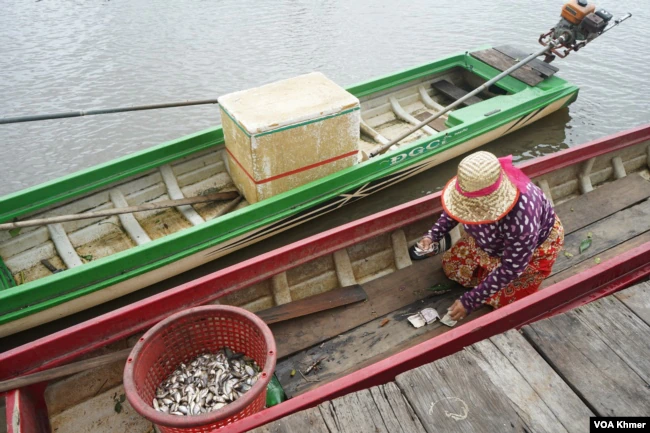
Villagers along the Tonle Sap floodplain are among those who have felt the impacts most. Phal Phany, 25, and her husband Pov Sith, 30, have been fishing together since they were teenagers in Prek Troab village. The couple use profits from fishing to grow crops including mung beans, corn, watermelon and pumpkin.
This year, they have hardly been able to catch anything but snails.
“If the water doesn't come soon, I won’t be able to earn enough money from fishing,” said Phany, who is pregnant and has a 7-year-old boy. “My plan this year is to take out a loan [again] to do farming next season.”
Phany said she usually spends up to 40,000 riels (10 U.S. dollars) per time to go fishing, including gasoline and bait, but some nights they don’t get fish and lose the bait.
“I never expected we would grow up only to see low water, and fewer fish,” she said. “My last resort would be to leave this hometown again to find jobs in order to pay back loans.” Her father, Chuch Phal, 59, sat nearby. “For my generation,” he said, “I could cast two nets and get a boat [of fish], but for this generation, it takes them from dusk till dawn, and they can’t even catch 10 kilograms.”
To cope with such change, Phany and her husband went to Thailand in 2016 to work in construction. They stayed three years. Now they can’t travel because of the Covid-19 pandemic, and they do not want to leave their children with the grandparents again.
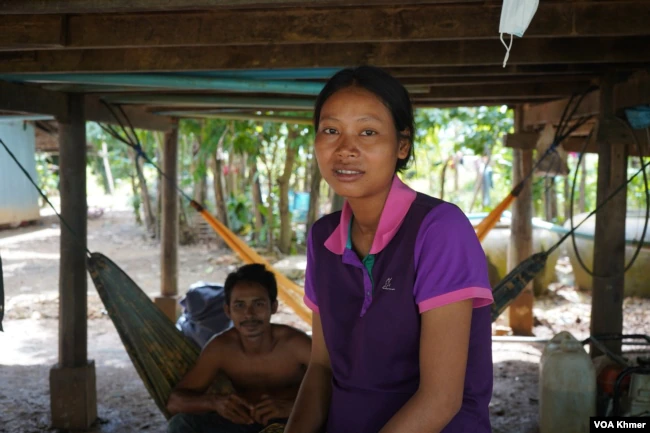
Many of Phany’s peers also have moved out of the village to work in construction or factories in Phnom Penh, Poipet or other towns. “Among 10 of my peers in the village, I would say six migrate, and four stay here,” Phany said.
Official data bear this out. In 2009, more than half of households used to be involved in fishing for income. A decade later, that figure dropped to about one in three, according to the national Socio-Economic Surveys. The decline occurred across the country's freshwater fishery zones. In the Tonle Sap region, the number of fisher families decreased by 17 percent over the same 10-year period.
“There are fewer fishers than before,” Hong Hy said, “because fishing is… well, the fish catch is getting lower, so fishers switch the occupation to do something else. The young people, who used to work with parents at farms or fishing, now go to work in factories.”
Officials said the exact number of fishers in Cambodia is unknown, as is their total catch. Those are two big missing pieces of the data puzzle.
Researchers believe that the needs of fishing families cannot be addressed until they are understood. “The law doesn’t require small-scale and family-scale fishers to report their number of fish catch,” said Lieng Sopha, director of the Department of Community Fisheries Development (CFDD) in the Ministry of Agriculture, Forestry and Fisheries.
Sopha co-authored a recent study on fish counts that noted the impact of national planning on small-scale fishers is unknown due to a lack of data.
“This means they are not adequately factored into decision-making processes and as a consequence resources and investments often fail to reach those who need them most,” the study says.
Small-scale fishers have long struggled while commercial fisheries thrived, but in recent years the Cambodian government has turned the tables. Two fishery reforms have been imposed, in 2001 and 2012, that extend fishing rights to small-scale fishers and fishing communities that used to be exclusively for commercial fishing lots.
The reforms aim to benefit the local fishers socially and economically, but the current multiple stressors affecting fishery in Cambodia are too big for the community to solve, said Christopher-Diepart.
On the one hand, the Cambodia fishing industry is affected by far-away dams, which impact the flow of water and block nutrient-rich sediments. On the other, the country faces its own local issues: overfishing, lack of law enforcement on fishery crimes, the destruction of flooded forest due to the expanding agricultural areas, and powerless communities, Christopher-Diepart told VOA Khmer.
In 2019, Cambodia made a decision to pause its mainstream Mekong River dam plans until 2030, news that many experts applauded. There weren’t official explanations on the motive, but experts point out the possibility of water shortages that could not generate the expected electricity power and the harm they would cause to fisheries and the river’s ecology.
Fish Farming is Fishers’ Saving Account
One partial answer to the struggles of local fishers is fish farming, or aquaculture.
Aquaculture in Cambodia has doubled over the 20 years, according to the FAO. From 2014 to 2019 alone, total aquaculture products tripled to more than 300,000 tons.
“It’s clear that we can’t rely on nature anymore,” said Hong Hy. “The population also increases, and the scientists have proved that fish is the most important nutritional source benefiting public health. Fish is now in high demand. Nature can’t support this much, so we need to farm fish.”
Puth Rina, 35, one of Thavy’s sisters, decided to raise fish.
Investing in aquaculture is not the same way as fishing, she said, and not the same as loading fish off the boat, measuring its weight, and counting money. She counted her fingers as if calculating and thought a while before coming up with the right words: Doing aquaculture, she said, is like having a savings account.
“If we only depend on the river fish, we don’t have anything to save,” she said.
So far, aquaculture, in addition to freshwater fishing, has kept her other siblings surviving without migrating.
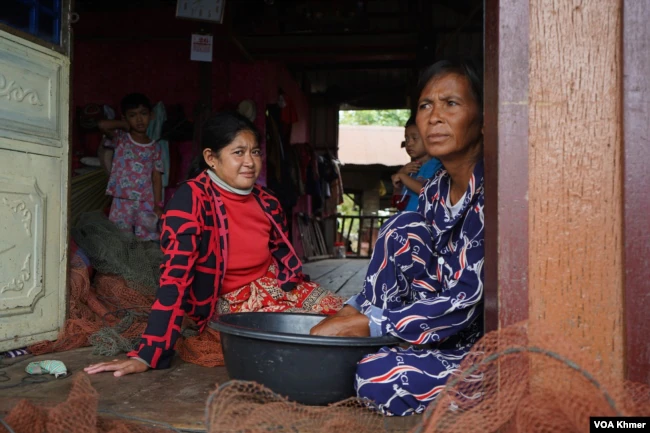
Other sources VOA Khmer talked to were not successful in aquaculture; some quit and some cannot afford to start.
The price of the farm fish is commonly half that of freshwater fish, Rina said.
The fish dealer, Pheav Soriya, used to farm fish in two floating cages, about 50,000 fry, only to quit after she failed a few years. “It didn't make a profit,” she said. The fish food is expensive, but the price of the farmed fish is cheap in the market. I lost a lot.”
“When I farmed fish, I didn't sleep well. When I stopped farming, I stopped feeling pain,” she added.
Cambodia has 51,000 fish farms, with 49,000 households adopting the practice, according to data from the Cambodia Inter-censual Agriculture Survey 2019. The same data shows aquaculture fisheries valued at about $95 million U.S. per year.
Cambodia’s aquaculture is not yet competitive, Hong Hy said. “First, the knowledge of fish farmers is still limited in terms of technical skills. Second, our infrastructure is still limited, and we also lack resources like making fish food.”
Currently, Cambodia has 516 community fisheries, or groups of small-scale fishers who are given rights to co-manage fishery resources in their regions. The number of community fisheries has doubled over the last two decades.
To invest in aquaculture, Christopher-Diepart recommended turning existing community fisheries into commercial aquaculture schemes.
“The key challenges will be how this organization that has been established long ago to basically be converted, or would transform into a commercial aquaculture scheme,” he said.
While the environmental impact of aquaculture hasn’t been broadly studied in Cambodia, experts say it’s a positive way to “produce food.”
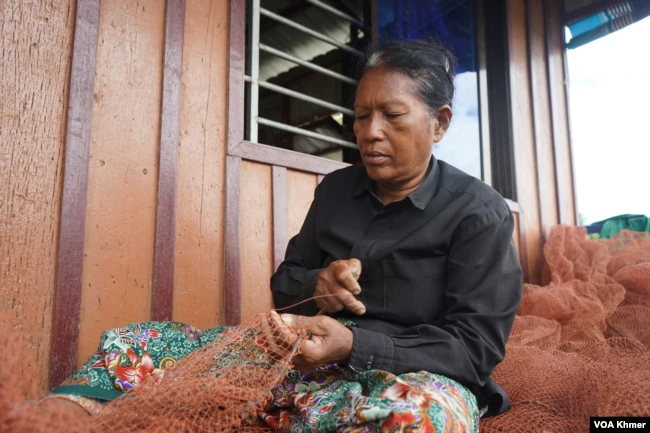
t noon, shortly after Puth Thavy had lunch, he rested near his 59 year-old aunt, who was sewing and fixing a fishing net. As they talked, his aunt bragged about having seen and known many kinds of fish that Thavy had never seen.
“Feel nostalgia,” Thavy told his aunt. “I have no idea for my future. I saw some fish disappear with my own eyes. I don’t know what fish species are going to disappear next.”
Methodology:
VOA analyzed datasets of fish production from the UN Food and Agriculture Organization and Fish Administration. Data on households engaging in fishing activities is from the National Institute of Statistics's Socio-Economic Survey (CES 2009 to CES 2019/2020). Data of aquaculture production is from the UN Food and Agriculture Organization and Cambodia Inter-Censal Agriculture Survey 2019 (CIAS19). Data analysis was done using Google Sheet and it can be accessed in this Google drive folder.
This story is supported by the Mekong Data Journalism Fellowship, jointly organised by Internews' Earth Journalism Network and the East-West Center. It was first published on VOA Khmer.


